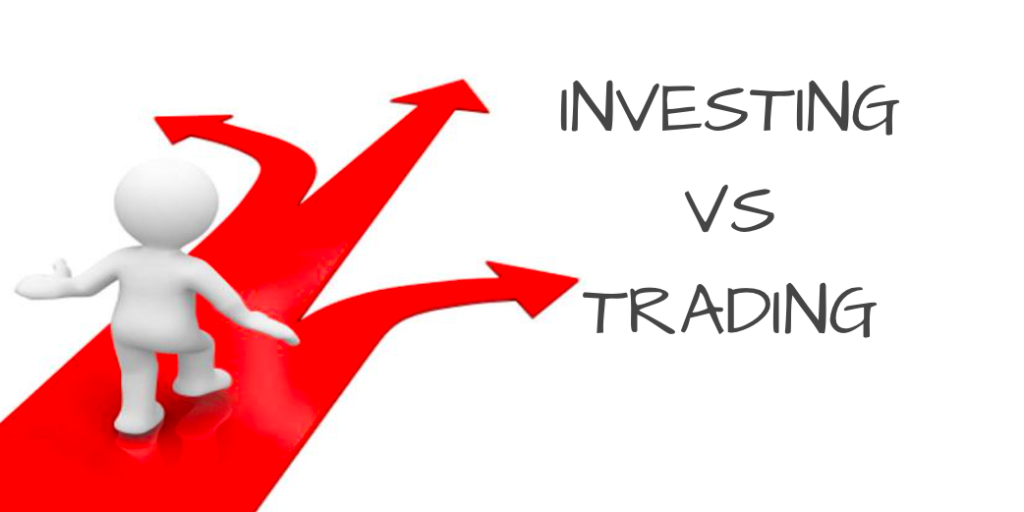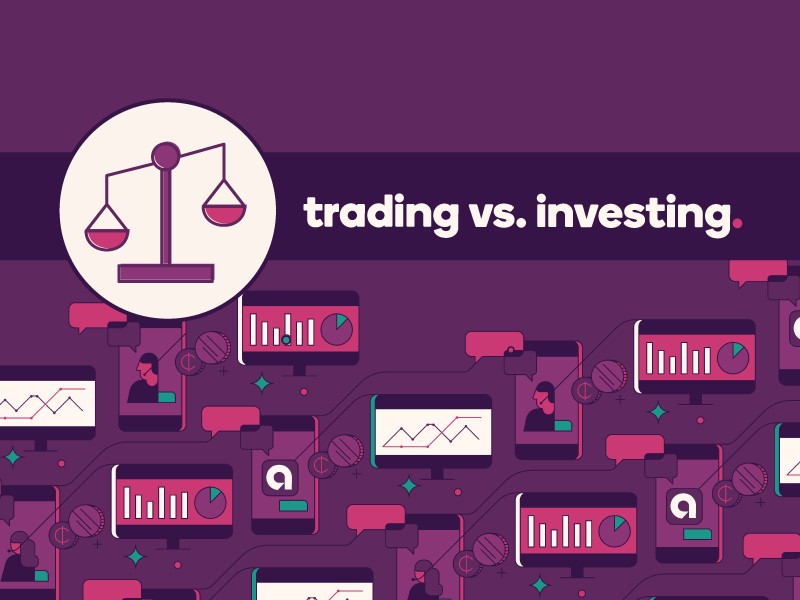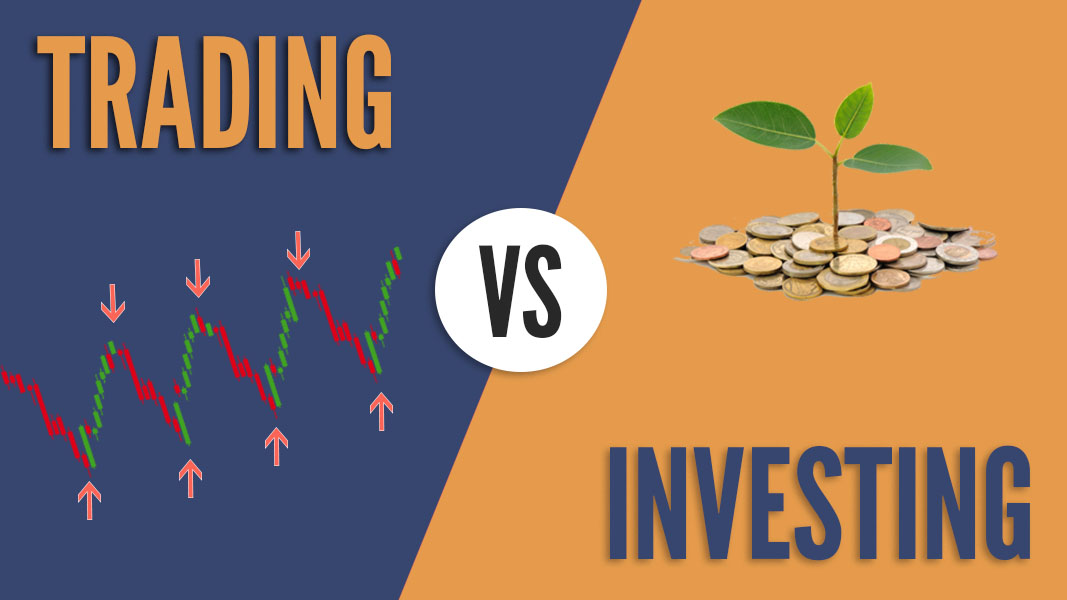Investing And Trading Are Two Veritably Different Approaches of Trying to Benefit in The Fiscal Requests. In General, Investing Takes a Longer- Term Approach While Trading Focuses on Shorter- Term Buying and Selling Investing And Trading May Feel to Be a Part of The Same Process for Someone Who’s Fairly Inexperienced in The Fiscal Request, But Actually, the Two Styles Are Veritably Different. Let’s Look at The Two to Understand the Differences Between Them.
Investing
The Thing of Investing Is to Gradationally Make Wealth Over a Long Period of Time by Buying and Holding of a Portfolio of Stocks, Baskets of Stocks, Collective Finances, Bonds, And Other Fiscal Instruments. Investments Can Be Held for A Number of Times, Or Indeed Decades, With Investors Taking Advantage of an Increase in The Value of The Investment and Gratuities Like Interest Income and Tips. Request Volatility Is Ineluctable, But Investors Will “Ride Out” The Downtrends with The Anticipation That Prices Will Bounce Back and Any Losses Will Ultimately Be Recovered. Investors Generally Are More Interested in Request Fundamentals, Similar to Price- To- Earnings Rates and Operation Vaticinations.
Trading
Trading Involves Buying and Selling Stocks, Goods, Currencies, Or Other Fiscal Instruments Over a Short Period of Time. The Thing Is to Induce Returns from The Short-Term Movements in Prices of These Fiscal Instruments. Dealers Principally Take Advantage of Volatility. They Frequently Use Specialized Analysis Tools to Descry Short-Term Patterns in Prices and Therefore Identify Good Trading Openings. While Investors May Be Satisfied with Periodic Returns Of 10 To 15, Dealers Might Look for A 10 Return Each Month. Gains Can Be Generated by Buying at A Lower Price and Dealing at An Advanced Price Within a Fairly Short Period of Time. Gains Can Also Be Generated by Dealing at An Advanced Price and Buying at A Lower Price (Known As “Dealing Short”) To Benefit from Falling Requests. Bear In Mind That All Trading Involves Threats and It Can Also Lead to Losses There Are Four Different Trading Styles, Each with A Different Timeframe for Holding an Open Position.

Position Trading
A Position Dealer Buys and Holds an Investment for The Long- Term with The Anticipation That It’ll Increase in Value. Thus, Positions Can Be Held Open from Month to Time.
Swing Trading
Swing Trading Involves Opening Trades That Last a Couple of Days Over Many Months in Order to Benefit from An Anticipated Price Move. Thus, Positions Are Held from Days to Weeks.
Day Trading
Day Trading Involves Buying and Selling Within a Day. Positions Are Held Throughout the Day Only with No Late Positions.
Crown Trading
Crown Trading Tries to Benefit from Multiple Small Price Changes. Positions Can Be Held Open for Seconds to Twinkles with No Late Positions. Dealers Frequently Decide on Their Trading Style Grounded on Factors Including Account Size, Quantum of Time They Can Devote to Trading, Position of Trading Experience, And Threat Forbearance.
Investing Vs Trading Differences
The Main Difference Between Trading and Investing Is That Trading Provides the Occasion to Realise Gains from Unpredictable Trends in The Request. With Investing, Short-Term Earnings and Losses Are Ignored for Long-Term Earnings, Which Are Achieved as The Company Grows. A Dealer Will Concentrate on The Perceived Request Value of The Fiscal Instrument. They Aren’t Actually Interested in The Fiscal Health of The Underpinning Company. Still, An Investor Is Interested in The Company’s Fiscal Performance Further Than Trends. Trading Takes Advantage of Both Rising and Falling Requests to Enter and Exit Positions Over a Shorter Time Frame, In the Attempt to Take Lower, More Frequent Gains. Still, Investing Involves Holding onto An Asset for Longer Durations. To Add Up, Trading Involves Dealing With the Fiscal Instrument as Soon as It Hits the Target Price or Crosses the Stop Loss Price. In Discrepancy, Investors Are More Likely to Ride Out the Downtrends of The Request and They Don’t Vend Unless Needed.
Open A Forex Trading Account
To Start Trading Currencies, You’ll Need to Open an Account with A CFD Forex Broker Brokers Make a Profit from The Spread, Which Is the Difference Between the Steal (Ask) And Sell (Shot) Prices for An Item. Setting Up a Forex Trading Account with Minimal Capital Conditions Is a Smart Option for Neophyte Dealers. You May Learn Further About Forex Trading and Develop Your Trading Style by Opening Such an Account.

Make Your Trading Strategy
Although The Timing and Request Vaticination Aren’t Always Attainable, Having A Trading Strategy in Place Can Help You Establish Broad Principles and A Road Chart for Trading. The Circumstances Around Your Trading, Status, and Capital Serve as The Foundation for A Solid Trading Plan. It Considers the Quantum of Plutocrat You’re Ready to Invest in Trading and The Position of Threat You Can Repel Without Losing All of Your Finances. Keep In Mind That You Can Trade Forex Using Influence. This Has Both Pitfalls and Benefits.
Tips For Forex Trading
Get Acquainted with The Forex Request
Although It Isn’t Delicate, Forex Trading Is a Unique Bid That Requires Specific Knowledge. For Case, The Motorists for Currency Price Movement Are Different from Those for Equity Requests, And the Influence Rate for FX Trades Is Larger Than for Shares. The Fundamentals of Forex Trading Are Covered in A Number of Online Accoutrements for Newcomers, Offered by Colourful Online Forex Brokers.

